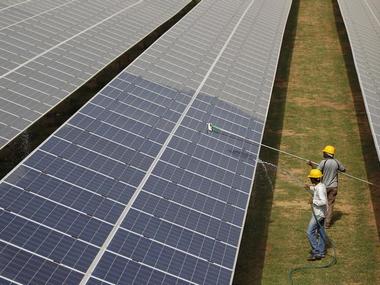Solar AC in for INR 90,000 in India
Solar products have remained niche entities till now as companies have not produced or marketed them effectively in the Indian market. Most of the solar products such as solar lamps and solar street lights are sold through government programs and there is hardly a big enough private market. However, things may be changing rapidly in the Indian market with major electronics producer Videocon launching a solar air conditioner for the Indian market.
The company is selling 2 products of 1 and 1.5 ton priced at INR 90,000 ($1,300) and INR 1,39,000 ($2,000). Though the price may look high, the savings for the entire life cycle would be higher than the normal air conditioners sold in the Indian market. Given the relatively high electricity prices in India, air condition bills cost a bomb especially in the very hot summer months when they are used extensively.
Also read Top Solar Products that can reduce your bills this summer.
While solar air conditioners are not new, the recent sharp fall in solar panel prices has made the products affordable. However, I think that the companies which will be successful will have to launch an installment plan as not many Indian consumers are willing to pay a high price upfront. The prices of these air conditioners will be at least 4x times that of a normal AC which means that the companies will have to educate the consumers on the long terms savings potential.
You can check out the solar AC here.
Types of Solar ACs
1) Direct Current Solar Air Conditioners
Household Appliances mostly run on alternating current (AC) while solar power generated is direct current (DC). The conversion from DC to AC is done through a solar inverter which leads to increased cost and loss in efficiency of about 15-20%. In direct current solar air conditioners that AC is directly powered by solar energy without conversion leading to power savings.
2) Passive Solar Air Conditioning
In this type of cooling the design of buildings is done in such a way that it slows the rate of heat into a building in the summer, and improves the removal of unwanted heat. It involves a good understanding of the mechanism of heat transfer. Passive solar cooling is much easier to achieve in new construction than by adapting existing buildings.
3) Solar closed-loop absorption and adsorption Air Conditioning
Active solar cooling uses solar thermal collectors to provide thermal energy to drive thermally driven chillers. Solar thermal energy heats the heat transfer fluid within the system. The generated heat is then used in conjunction with absorption chillers to provide a renewable source of industrial cooling.
4) Photovoltaic (PV) Air Conditioning
This is mainly used in residential air conditioning. The power generated from the solar panels is used to drive conventional compressor-based or adsorption/absorption-based systems. PV cooling cost effectiveness depends largely on the cooling equipment and the efficiency in electrical cooling methods is quite poor.






